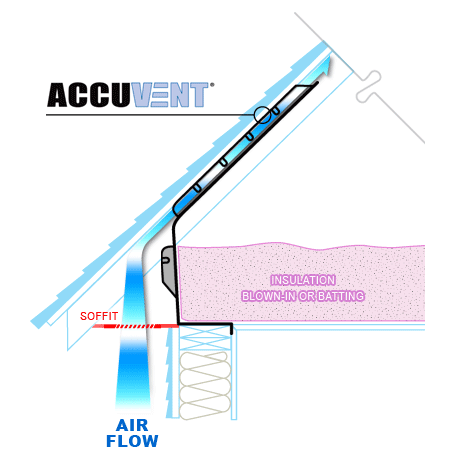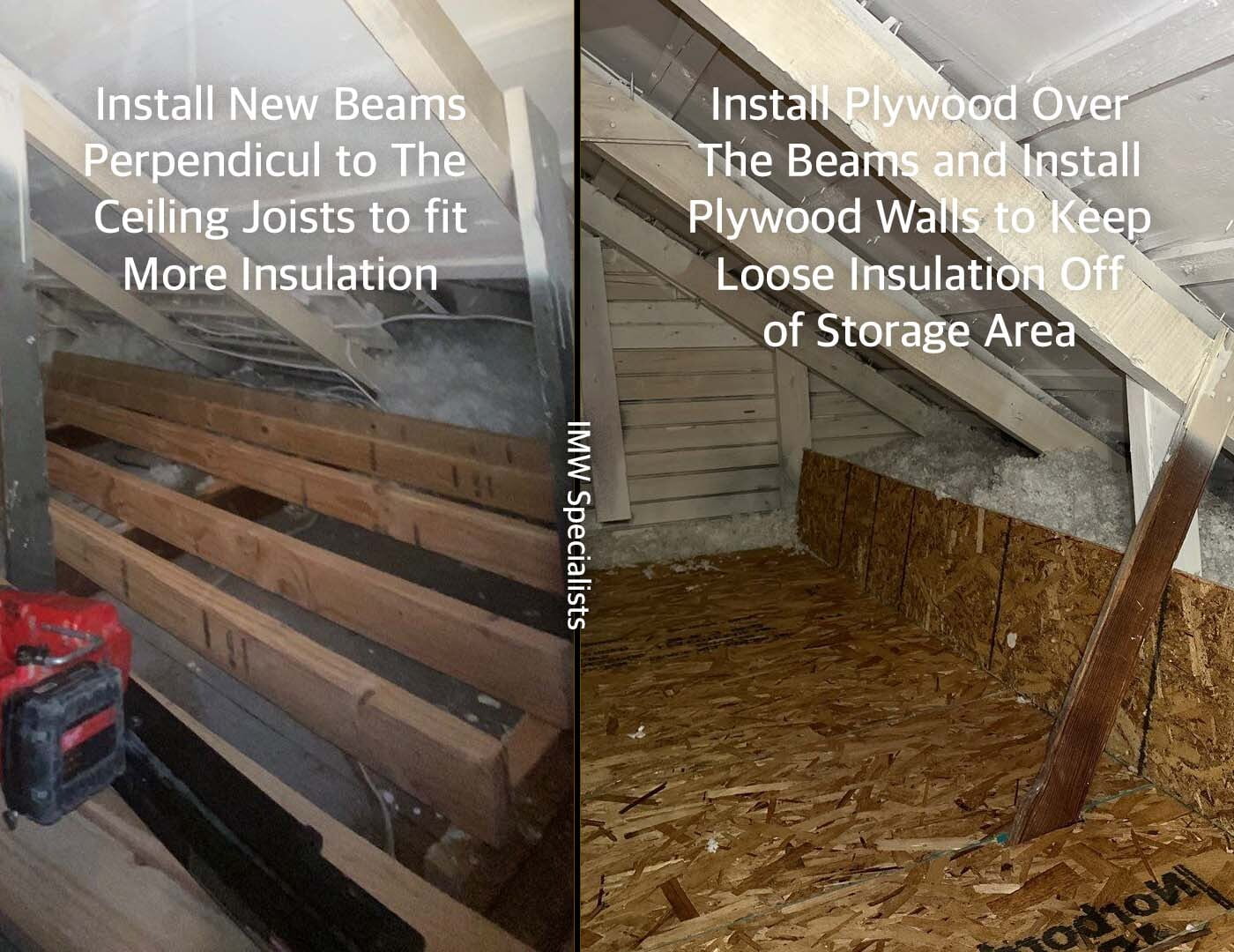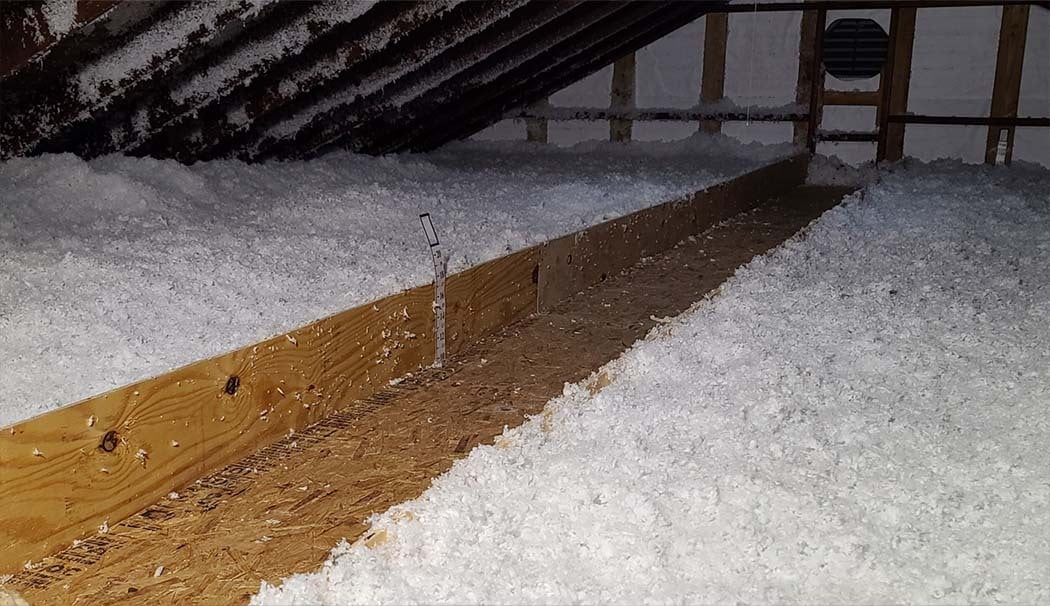Attic Insulation Recommendations, Process, and Tips
Where Do You Put Attic Insulation?
We normally recommend and this page we are going to talk about the process of insulating the attic at the ceiling level, meaning the attic floor. In our climate zone, it is rarely recommended to add your air sealing and insulation layer on the roof. While it is possible and we sometimes do it, it only makes sense in very specific Circumstances. Here are some reasons why insulating at the ceiling/attic floor is preferred in our climate zone:
- Lets the attic ventilate properly without losing conditioned (heated and cooled) air
- Insulating the roofline is substantially more expensive
- Prevents vapor/moisture buildup in the attic that can cause mold and moisture
- Reduces the amount of space the heater/ac needs to heat and cool
- When the roof is insulated, the entire volume of the attic will need to be heated and cooled to the same temperature as the house, which can often increase the load by 30% or more on the HVAC system
- A lot of roofers won't warranty a roof with insulation on the roof
- If you have a roof leak it will do much more damage
IMW Specialists Attic Insulation Process
We evaluate what is needed for each project, most insulation attic insulation projects will share these steps. If you are reading this from outside of Pennsylvania, New Jersey, or Delaware that the recommendations for your area might be different. We work in climate zones 4 and 5. If you want to learn more about climate zones and the different recommendations, check out our general insulation page.
Old Attic Insulation Removal
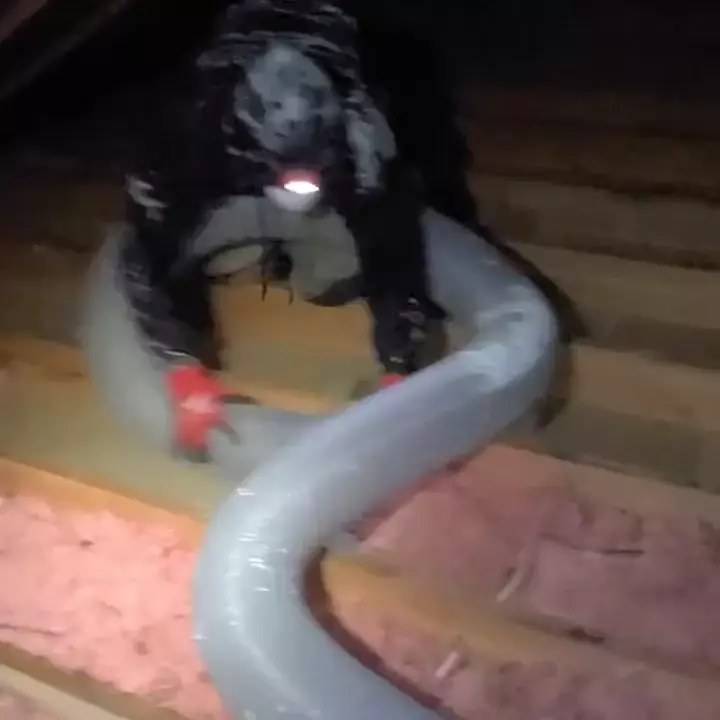
Removing old insulation may not always be necessary. However, removing old insulation can provide some great benefits that are worth considering.
The main and most common reason to remove old insulation is if it is contaminated by mold, water, or rodents. Even old insulation without outside contaminants can be dangerous! Most insulation contained dangerous chemicals such as formaldehyde as late as 2015!
If your insulation is not contaminated and you aren't worried about having old insulation, it still might be worth considering removal. When we remove the old insulation it allows for complete access for air sealing. While we can air seal around old insulation, there is no alternative to having a clean slate to work with.
Attic Insulation removal might also be a good idea if you are planning to have other work done in the attic. It is common for us to removal all attic insulation and debris before HVAC and electrical contractors come in to do work. Then we come back after the other contractors are done and make sure everything gets air sealed and insulated.
Attic Air Sealing
The hot air in your house rises. When the air rises it will push itself out of every gap, crack, and space it can fine. Air escapes through light fixtures, outlet and light switches, plumbing vents inside of your walls, even the entire top of your partition walls have a long gap where the wall material meets the wall framing.
When this air escapes through the top of the house it will pull the other air from the bottom of the house, creating a suction in the lower floors/area of the home. The suction pulls air in through any gaps, cracks, seams, or openings. This is called the stack effect.
If the attic is properly air sealed, it will actually stop a significant amount of drafts/air leakage into the house since the stack effect is one of the main drivers for air to move in and out of the house.
The stack effect still plays a roll in the summertime too. Even though it is hotter in the outside, there will still be heat rising to the top of the house. That hot air will still escape through the top of the house pulling hot air in through the bottom.
Another little talked about consequence of poor attic air sealing is mold formation in the attic. Most mold in attics will start growing in the winter time and then spread quickly in the summer. When the hot humid inside air rises in the wintertime, it will condensate against the cold building materials in the attic. This happens because hot air can fit more water vapor in it than cold air. When warmer air hits a colder surface, the water is actually squeezed out of the air and turned into condensation (like a cold glass of water on a hot day). That condensation in your attic will cause mold.
We air seal attics with a fire rated single component foam product. It is not mixed on site, we purchase the materials premixed so that there is very limited VOCs and no chance of mixing errors, which can cause massive problems. We use a fire rated sealing product because it is actually required by code to have the penetrations through ceilings fire blocked.
Air leaks though the attic are also a highway for rodents and bugs. When all the gaps and cracks are sealed up, they can't get through.
Baffles and Attic Air Flow
An important step in installing insulation is to install baffle vents. On the right is an animation provided by our baffle supplier. When a baffle is installed improperly or not installed at all, the insulation in the attic can block the vent which will lead to moisture and mold issues. The baffle also stops wind washing, which is when the wind hits the side of the house, goes up into the vent and blows the old insulation around.
It is very important for the bottom part of the baffle to be attached to the top of the wall like shown in the animation. If it is not then the baffle will not perform as intended. This can be very difficult to do on retrofit work, but we have methods to get it done.
Access to Utilities & Storage
We always advise against storing stuff in your attic! Stuff in attics get ruined. The extreme temperatures in summer and winter will ruin clothes, pictures, electronics, and almost anything else stored up there. Having a floor in your attic also reduces the effectiveness of the insulation.
When there is a floor down we can't access anything to air seal. If you read the air sealing section on this page you know that's not good. That being said, we understand sometimes you gotta do what you gotta do. So if you need storage we remove all of the old floors, install new beams across the old beams, and install new plywood on top. We install plywood walls to stop loose insulation from falling into the platform.
This process allows us to air seal and fit the right amount of insulation under the floor. Since we install the new beams perpendicular, it even insulates on top of the ceiling joists, making sure there are no weak spots.
There are also situations where you might want access to different areas of the attic. For example, if there is an air handler or an HVAC system in the attic, that will need to have easy access.
Since someone walking through the old insulation will ruin it, we will always put a raised walkway like in this picture to air handlers.
Sometimes people like to have access to the attic to do periodic inspections for leaks and rodents. While this is definitely not required, it might be something to consider investing in to make the house more maintainable and easier to repair.
Attic Ladders & Insulating The Attic Access
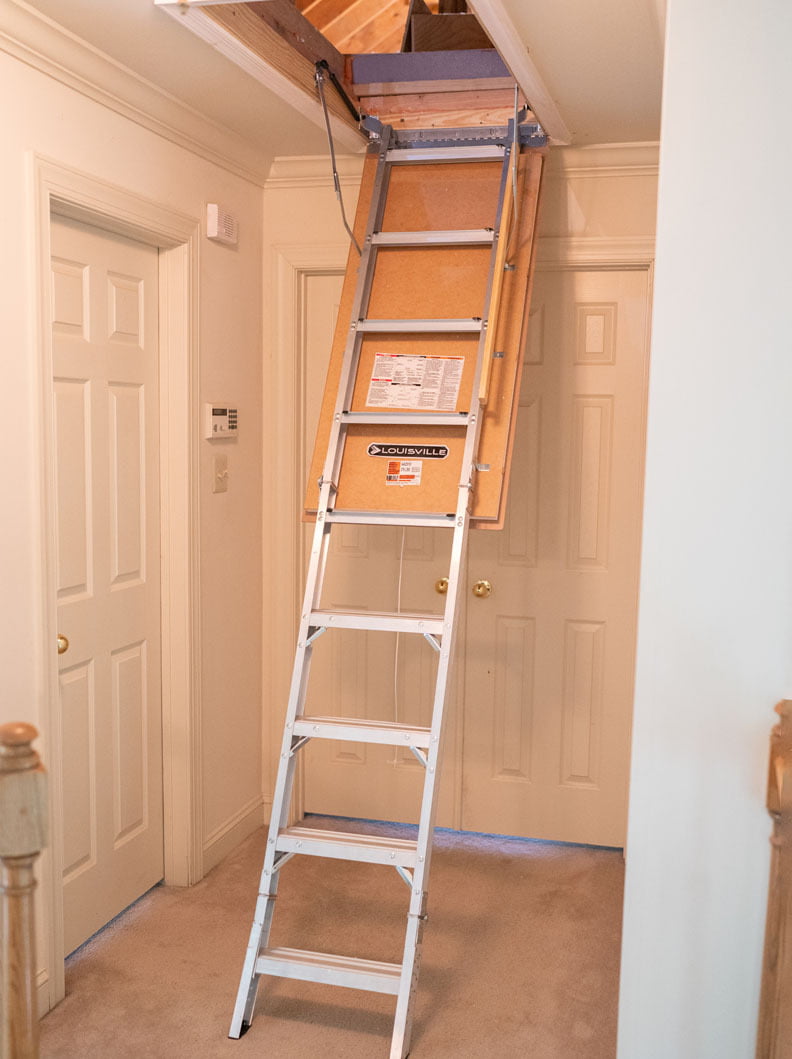
One of the weakest spots of your attic insulation is the hatch to get in and out. The best case scenario for the insulation is to have no access at all. Since access can be pretty important, that isn't always an option. For attics that need frequent access, like when HVAC systems or storage are in the attic, we can install an insulated attic ladder.
When there is already an attic ladder we can either replace it or take the cheaper and easier option of installing a zip up cover on top of it. In our testing, a new sealed and insulated ladder preformed about equally to our zip up attic covers. Though the best case scenario for energy usage is to have both the new ladder and cover.
When there is a staircase leading into an attic we build a custom foam board hatch level with the attic floor. This is the best way to handle these because it is not feasible to get the required insulation value on the walls, door, or staircase. It is much better to seal it off from the top where it's one straight plane.
When there is a push up hatch to get into the attic there are two options to upgrade. One is for us to build a solid foam box above the hatch. We then seal that closed with foam. If it need to be access, the foam need to be broken off. This is great for attics that don't need to be accessed often because it is just as effective as sealing it off permanently. The second option is to seal it the best we can with weatherstripping and install foam behind the hatch. That is better than nothing, but the other options provided work much better.
Installing New Attic Insulation
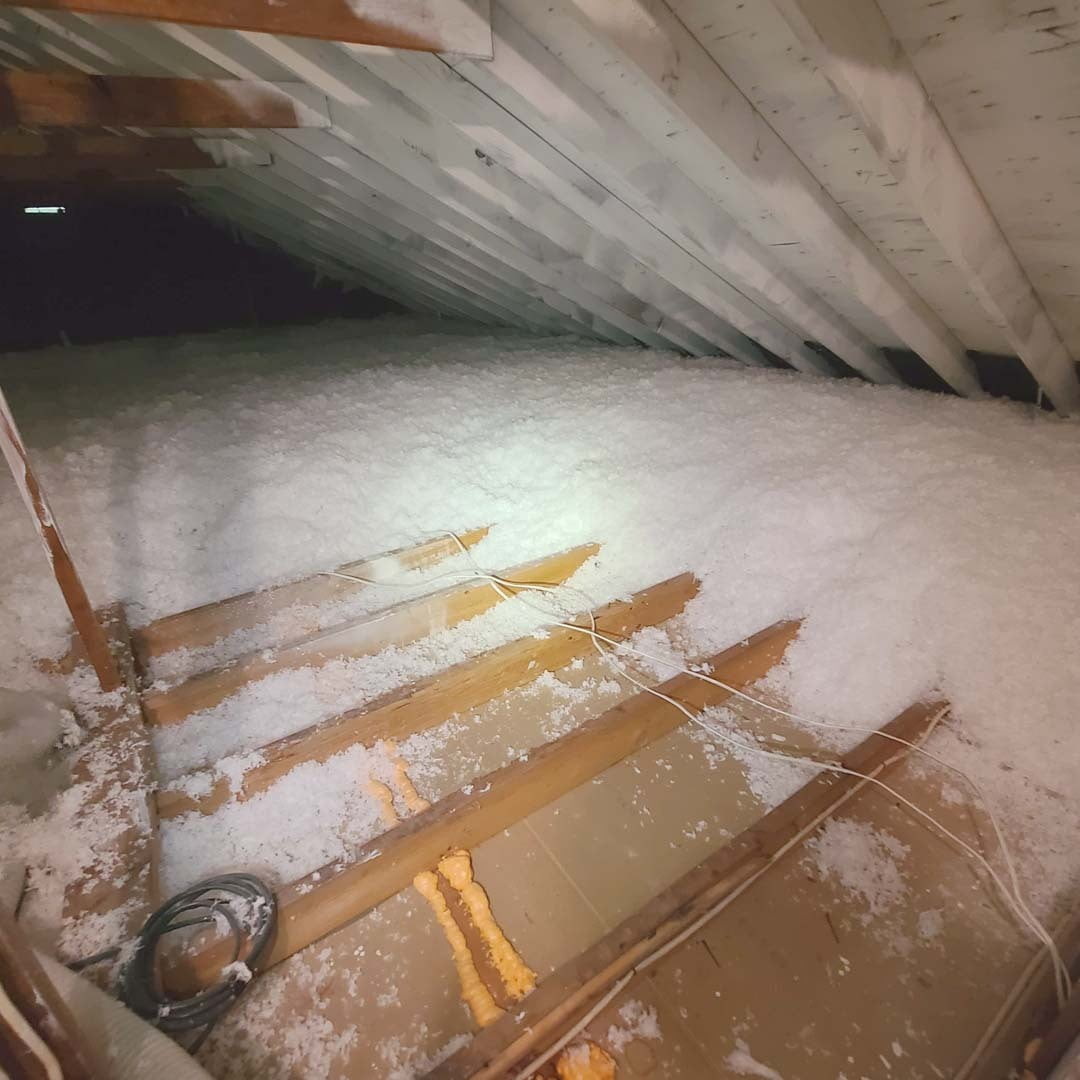
Now to the best part, time to put the new insulation in! The best kind of insulation for attics is loose insulation. It is the best because it fills all voids and shapes and leaves no air gaps. You can see from this picture how important it is that this is loose. There are wires going over the joists, beams and nailers running across the top, and within the insulation out of view is a lot of lights.
With a solid form of insulation, like rolled or batts, every object in the way would need to be cut around, including all of the wires, pipes, and lights! Not only is this labor intensive, it does a worse job at insulating. Any cut in the insulation is a seam where air can get through or where there can be air pockets. That will at best bypass the insulation and at worse cause big issues with condensation.
The loose insulation is seamless and fills the space like a liquid. It is installed through a hose so no materials need to be carried through the house. And since it is installed through a hose, we can very easily install insulation in hard to reach places. We are also able to completely cover the ceiling joists to make it so there is no thermal bridging. If the insulation was only level with the top of the ceiling joists, then the joists would be uninsulated space, leaving a bridge to bypass the insulation. We install attic rulers throughout the attic to ensure the insulation is at the required depth.









